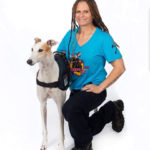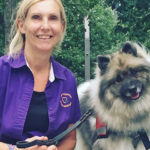K9 Response Program – Responders Helping Responders
$9.99
(Video & Handout)
Overview
“When everyone walked away Charlie stayed by my side.
Not coping to healthy coping, he brought me from sinking further into that dark downward spiral back up into the light and life”
After losing 6 friends on my FD to suicide, I went to Chaplain Mario Gonzalez, the director of my peer support program and he called for a meeting with the clinical director. It was decided there was an obvious need and I was instructed to do a 3 month pilot study with Charlie at my station. That’s how the MDFR Response K9 program got started. It looked different back then but has grown into what it is today.
When I started doing research into the benefit of therapy and service dogs I decided certification was the way to go for our teams and our organization as we already had CISM training for the humans. It was through the connections with I.C.I.S.F. and our CISM training program that I ended up meeting Cindy Ehlers, an expert in the field of civilian canine crisis response and a K9 handler at the WTC site after 9/11.
After seeing the direct benefits as backed up by current research indicating therapy and service dogs play a role in resiliency and post traumatic growth we set up the program with 3 separate tiers for this specific responder program.
The purpose of this presentation is to promote an awareness of how crisis response canines can help both civilian and responder organizations and explain the differences in training and certification currently available for both.
There are three parts to the program:
(1) CISM Response K9
In this tier, the responder with his or her own trained K9 is an active member of the CISM Peer Support team. In all CISM settings the benefit to the recipients is the oxytocin release and immediate physiological responses for calming. The dogs help create a safe space for responders where its ok not to be ok and process what they just experienced.
We’ve noticed the dog can also become a focal point for people who are struggling to share. when the guys have a hard time talking they automatically start staring at Charlie.
its easier to look at a dog than other people when they have something difficult to say. the dogs can be a focal point for people having a hard time sharing and some have used Charlie as a shield to lean on when they flat out broke down. In a diffusing setting we expect the dogs to alert to mood changes when humans change emotions and pheromones are produced. In this way the dogs aren’t just a prop for people to look at, they become active participants in the diffusing.
(2) Station Dogs
Because of cumulative trauma, station dogs are justified as reasonable to have something in place before and after each call as responders are not able to process the events of the last call before running the next call.
The expected benefits from long term exposure to the same dog include less time off from work, more cohesive crews, less discipline issues, etc.
(3) Service dogs
To be able to provide personnel with service dogs that can provide healing to the soul, reduce symptomology and build the foundation of the person, not just the first responder.
Learning Objectives:
- List why the use of trained certified canines are beneficial for responders in CISM/ Stress management roles
- Define and describe the training and certification criteria such as ethical care of canines, what advocacy really means, why learning how to read your canine’s signs are paramount in the training process, etc.
- Learn the best practices for using canines in CISM and stress management roles in First Responder organizations












